
from the British Colonies
Updated - December, 2014
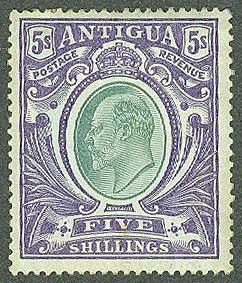
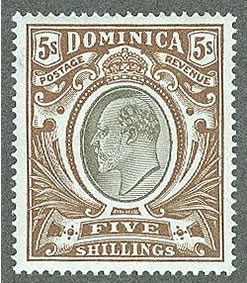
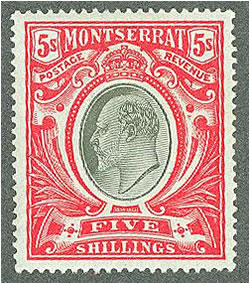
The King Edward VII stamps were produced during a very short time frame - 1901 to 1913, even though the King died in 1910. As a result of the time period and the short reign, many of the stamps were only printed one time, and the higher values were not printed in a very large quantity. It is not unusual to find that there were only 2,000 issues for some of these stamps.
Identifying the stamps issued during the reign of King Edward VII is typically a matter of three components:
1. The watermark - Either Crown CC, Crown CA, or Multiple Crown CA.
2. The paper - you will find that some issues were printed using both chalky and ordinary paper.
3. The color - unlike later eras, there is not a lot of color variation because there were not very many printings, but some do exist.
This article will attempt to help you identify your stamps by describing what to look for in these areas.
Where they are used, the catalog numbers are from the 1980 Commonwealth Five Reigns Catalogue (CW), and the 2013 Stanley Gibbons Stamp Catalogue (SG). If you would like to obtain a copy of the Commonwealth Catalogue, please contact Bridger & Kay.
The images were saved in a larger size and at a higher resolution so you can more easily see the details used in sorting them. Please be patient if it takes a few minutes for this page to load.
Shown as seen from the back of the stamp.
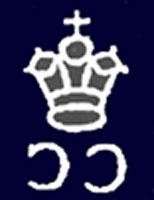
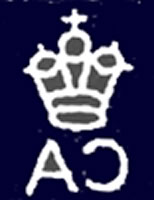
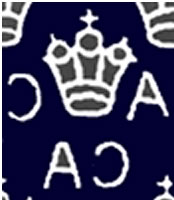
Crown CC
Expect to find the CC
at the bottom of the stamp, but there are exceptions.
Crown CA
Expect to find the CA
at the bottom of the stamp.
Multiple Crown CA
The CA appears at the bottom and about
midpoint of the stamp.
One of the problems with finding watermarks on older
stamps is the previous treatment of the stamp. Classic stamps are often
found with hinges still attached, or in some cases with paper still
adhering to them.
When you are trying to determine the watermark, look for the CA or CC
at the bottom of the stamp first. If you have a stamp with the Multiple
Crown CA (MCA) watermark, you will see either fragments of a crown or
additional letters outside the bottom area. So even if you are unable
to clearly see the entire watermark, it is possible to determine what
stamp you have from this process.
Several ways to identify watermarks are available. I place the stamp on black paper under twin spotlights that are on opposite sides of my desk. In many cases this is enough to allow the watermark to be seen. For tougher cases, I will hold the stamp up to a light and move it around hoping to just see the letters. There are also colored filters that can be used for stamps on colored paper (yellow seems to be the most difficult one.) Finally if all else fails, you can dip the stamp in a watermark fluid. I try to avoid this process because it is a chemical, and some can be dangerous to breathe. So if you do this often, look for a safe fluid.
2 ways to determine this paper characteristic
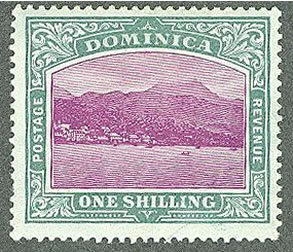
The silver test will show a faint reaction on the Crown CC paper. If you look very closely at the right lower corner, you will see a very faint line.
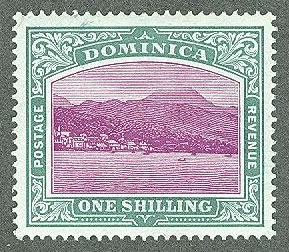
Ordinary Paper
Watermark Crown CC
Chalk Paper
Watermark Crown CC
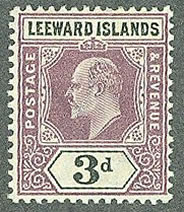
The paper with CA and MCA watermarks do not appear to respond to the silver test. I look for a very poor impression which would tend to be found on Ordinary Paper.
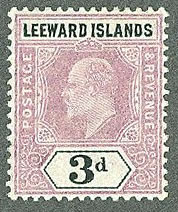
CW E14, SG 33
Ordinary Paper
Watermark MCA
CW E14, SG 33a
Chalk Paper
Watermark MCA
Chalk paper is not really coated with chalk, but we use the term to describe these type of stamps. If you want a complete description of the various coating that were used, consult Dr. Miles Glazer's book: "The King George V High Value Stamps of Bermuda, 1917-1938". Dr. Glzzer actually ground up various stamps to determine the chemical makeup of the coatings that were used on them. I guess if you have to know the answer to this problem, this is the way to get it. My feeling is to use a less destructive method.
Many collectors have a real problem with identifying colors, and understanding why they are different. Generally there are two reasons:
1. Different Printings of the same stamp were created using inks that were similar in color, but not an exact match. This was a very imprecise process before the computer age.
2. Poor Storage and Tropicalization also causes colors to change. These variations are defects and stamps that show this affect should be considered defective. Look for brownish paper and toning.
If you are looking at stamps that have been stored in a reasonable manner and have not been affected by high humidity, they can be compared to each other to determine the color. Where there are several printings, I try to accumulate a number of stamps and compare them to each other. Typically, I use my spotlights and put the stamps on either black or white paper so I have some contrast. Without consulting a catalog - sort them into color piles based on the other stamps. When you are finished, look at what is different about them - paler shades of color, deeper shades of color, etc. You can use a color chart to help you determine the relative differences between the shades of red, green, blue, etc. Stanley Gibbons makes a good one, or you can obtain a professional color palette, but that is probably overkill for this purpose.
Luckily, most of the King Edward VII issues were only printed one time, so you won't find as much variation as you will find in the King George V and King George VI issues because they were printed in greater quantity, and over a longer period of time.
This article was written to help you identify your stamps. Please feel free to ask a question, or include a correction - use the link below to send an email. If anyone is interested in forming an Internet Study Group for King Edward VII stamps, I would like to join the group.